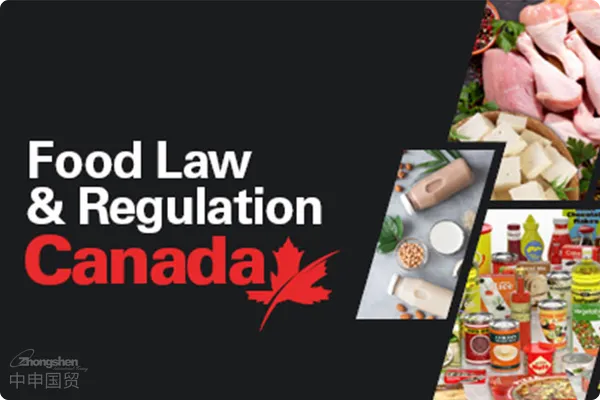- Shanghai Zhongshen International Trade Co., Ltd. - Two decades of trade agency expertise.
- Service Hotline: 139 1787 2118
November 21, 2023 11:25

II. Detailed Content of Regulatory Changes
2.1 Food Ingredient Standards
III. Impact Analysis on Enterprises
2.1.1 Application of External Standard Documents
Health Canada plans to manage food ingredient standards through the Food Ingredient Standards Document, replacing current provisions in the Food and Drug Regulations. This will make regulatory updates more flexible and rapid, fostering innovation in the food industry.
2.1.2 Unification of Regulatory Practices
The draft proposes unifying the mixed use of laws, regulations, standard documents, policy documents, and technical guidance documents to ensure clarity and consistency in regulations.
2.2 Microbiological Standards and Analytical Methods
2.2.1 New Management Model
To make microbiological standards more flexible and timely, Health Canada proposes incorporating them into the Table of Microbiological Standards for Foods and managing them as external standard documents.
2.2.2 Updates to Inspection Standards
Microbiological inspection requirements are updated to allow the use of reference methods or equivalent methods, improving flexibility and efficiency in testing.
2.3 Physicochemical and Nutritional Testing Analytical Methods
2.3 Physical, chemical, and nutritional testing analysis methods
2.3.1 Application of External Standard Documents
Similar to microbiological standards, the management of physicochemical and nutritional indicators will be conducted through the external standard document Food Physicochemical and Nutritional Characteristics Table.
2.3.2 Transformation of Protein Quality Assessment
Introduction of the PDCAAS method for protein quality assessment, replacing the currently permitted Protein Efficiency Ratio (PER) method.
2.4 Regulatory Changes for Food Additives
2.4.1 Updates to Food Additive Specification Requirements
The Food Additive Specification Requirements will become the external standard document for managing food additive specifications, enhancing regulatory efficiency and responsiveness.
2.4.2 Revision of Related Regulations
Amendments and updates to the content in the Food and Drug Regulations related to food additives, eliminating regulatory conflicts.
Health Canada and the Canadian Food Inspection Agency, under the 2019 regulatory plan, committed to modernizing existing food laws and regulations. The update focuses on food ingredient standards, microbiological standards, updates to analytical methods, and enhancing flexibility in assessing food protein quality. This update aims to address outdated regulatory frameworks, modernize the food additive regulatory framework, and lay the groundwork for future regulatory changes.
Although this regulatory framework update does not involve substantive changes to regulatory requirements, it signifies a shift in Canadian food regulations towards greater clarity, flexibility, and responsiveness. For food industry enterprises, this means more explicit and comprehensible compliance requirements, while providing greater room for rapid response to market changes and innovation.
3.1 Impact on Food Ingredient Standards
Enterprises will be able to adapt more quickly to new food ingredient standards, promoting product innovation and enhancing market competitiveness.
3.2 Modernization of Microbiological Standards
Enterprises will benefit from a more flexible management model for microbiological standards, making it more efficient to adapt to new regulatory requirements.
3.3 Updates to Physicochemical and Nutritional Testing Methods
The updated testing methods will enable enterprises to assess product quality and safety more efficiently and accurately.
3.4 Simplification of Food Additive Regulation
Simplified food additive regulation will reduce the time costs for enterprises in product development and market access.
Related Recommendations
? 2025. All Rights Reserved. 滬ICP備2023007705號(hào)-2  PSB Record: Shanghai No.31011502009912
PSB Record: Shanghai No.31011502009912










